
Don’t believe everything you hear
Fast food gets a bad rap, and understandably so in many cases. Still, rumors about six-legged chickens and dogfood-based taco meat are a bit overstated. Why do such crazy stories persist? These urban legends reveal how disconnected we are from our food, says Angel Planells, RD, a spokesperson for the Academy of Nutrition & Dietetics. “Most people have never been on a farm to see how livestock are raised,” he says. In the past, surveys have found that respondents don’t know what animal hamburgers come from. It might be just as easy to believe some of the following fast food myths. But now you’ll know better than mistaking these myths for food facts.
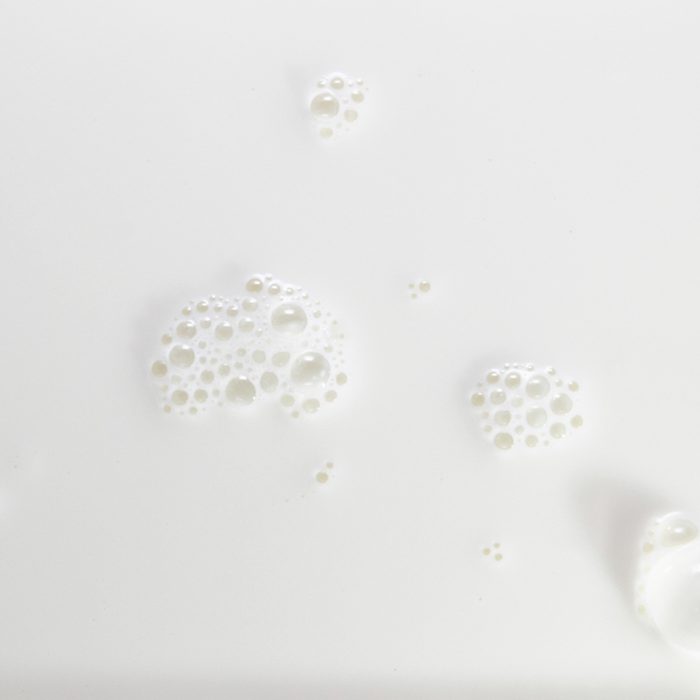
Myth: McDonald’s shakes don’t contain milk
Before dairy alternatives were as commonplace as they are today, Ronald McDonald and company’s insistence on calling their drinks “shakes” rather than “milkshakes” was met with suspicion about what they using instead (styrofoam and cow eyeballs were among the wilder guesses). The fast food giant decided to address this on their website’s FAQ page.
Basically, dairy regulations are quite strict about what can be called a milkshake, and the rules vary from state to state. To keep things simple, the company decided to stick with “shake”—but their drinks do indeed contain dairy, including soft-serve ice cream (in which the first ingredient is milk) and whipped cream. Take a look at this to see if non-dairy milk is the right choice for you.
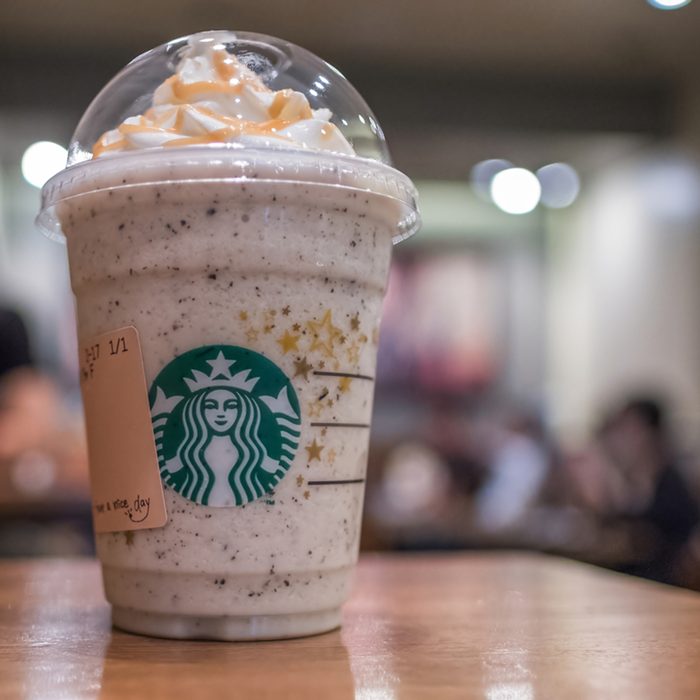
Myth: Starbucks frappucinos contain insect parts
Okay, this one actually used to be true—but only in the sense that a lot of your food contains the same. After consumer backlash in the spring of 2012, the company stopped using a natural red food coloring known as carmine or cochineal, which is made from crushed bugs. The dye is food-safe and still used in other food and beauty products, but it can cause an allergic reaction in some individuals, and it doesn’t qualify as vegan, vegetarian or kosher.
“On the whole, companies have gotten more transparent about the ingredients in their food,” says Bonnie Taub-Dix, RDN, creator of BetterThanDieting.com, and author of Read It Before You Eat It: Taking You from Label to Table. But some do change their formulations, she warns, so it’s always a good idea to read labels and check the nutritional information. Learn about the Starbucks secret menu items you’ll want to order on your next visit.
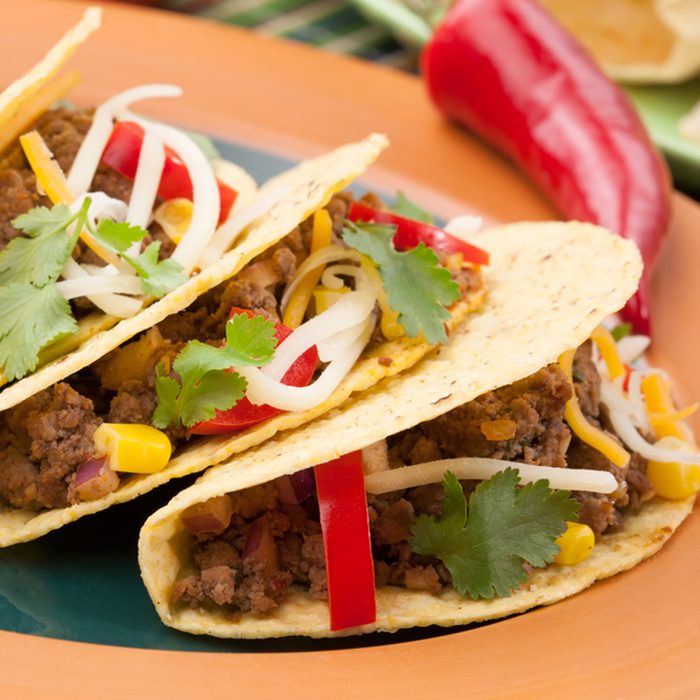
Myth: Taco Bell uses dogfood-grade meat
Even among fast food chains, Taco Bell stands out for its ridiculously low-priced food, which has led people to wonder what kind of corners were being cut to get prices that low. Rumors claimed the chain used meat barely fit for human consumption called “Grade D”—even though that doesn’t exist. In 2014, Taco Bell addressed these concerns by revealing their meat is beef with a mix of seasonings and thickeners.
“Taco Bell is probably one of the healthiest chains you can eat at,” says Planells. They were one of the first to hire a staff nutritionist, which led to the introduction of the lighter Fresco menu; everything on it is 350 calories or less and has 10 grams of fat. They’ve also vowed to reduce sodium content and make other healthy changes. By the way, here’s how Taco Bell got its name.
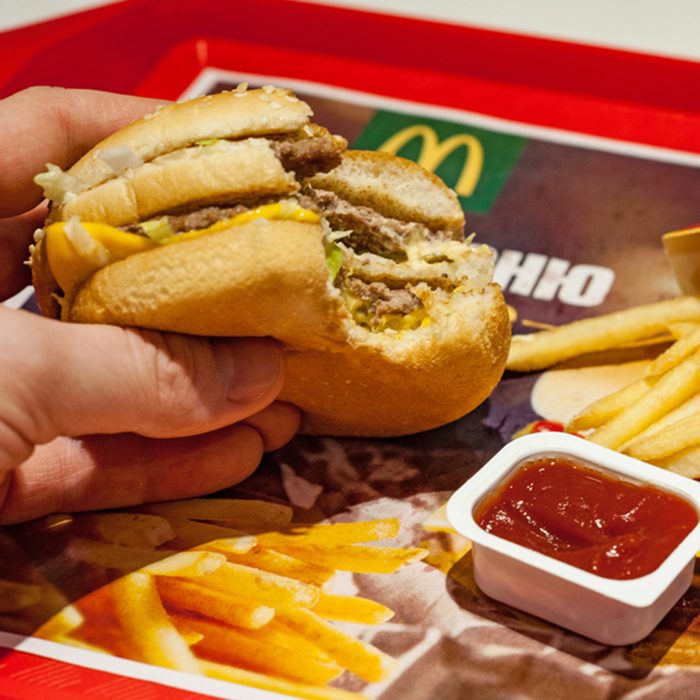
Myth: McDonald’s burgers won’t decay
Several viral images of burger-and-fry combos that refuse to rot have made the rounds, the implication being that the food is crammed so full of preservatives that it won’t decompose naturally. But when Food Lab’s Kenji Lopez-Alt put those claims to the test with his own experiment, he found that the burgers were drying out, much like the process used to make beef jerky, and that homemade burgers of the same size and shape did the same. Read up on 14 things you never knew about the Big Mac.
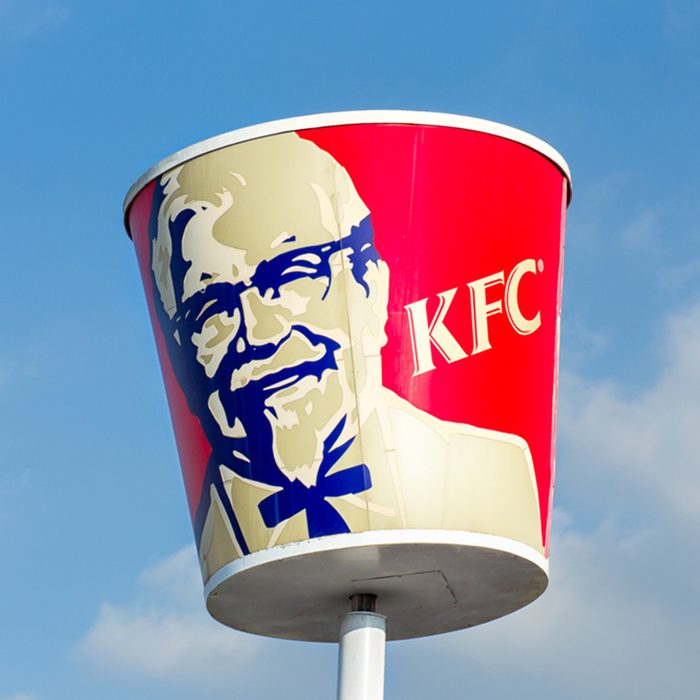
Myth: KFC gets its meat from mutant chickens
Concerns about factory farming and genetically-modified meat are understandable. But the idea that a company as large as KFC is breeding chickens with extra legs and gigantic breasts is untrue. Some folks even took the chain’s name change as an indicator that they could no longer call their meat “chicken.” But the choice was a marketing decision which the Colonel himself addressed in 2016.
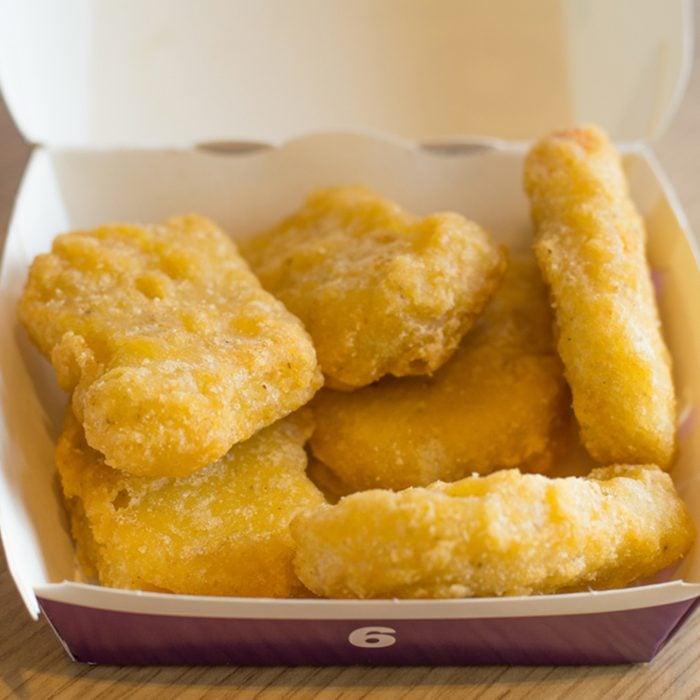
Myth: Chicken McNuggets are made with pink slime
A few years back, images of uncooked chicken nugget meat—dubbed pink slime—were everywhere. It introduced Americans to the reality of mechanically processed poultry. But this isn’t the stuff in McDonald’s Chicken McNuggets, as it turns out: These have been made with all white meat since 2003. And while pink slime may sound bad—and in fact, the industry prefers the less provocative title “lean, finely textured beef”—it’s just ground up meat. Last year, the news network that first aired the pink slime story settled a defamation lawsuit filed by a meat processor whose business was negatively impacted by the publicity.
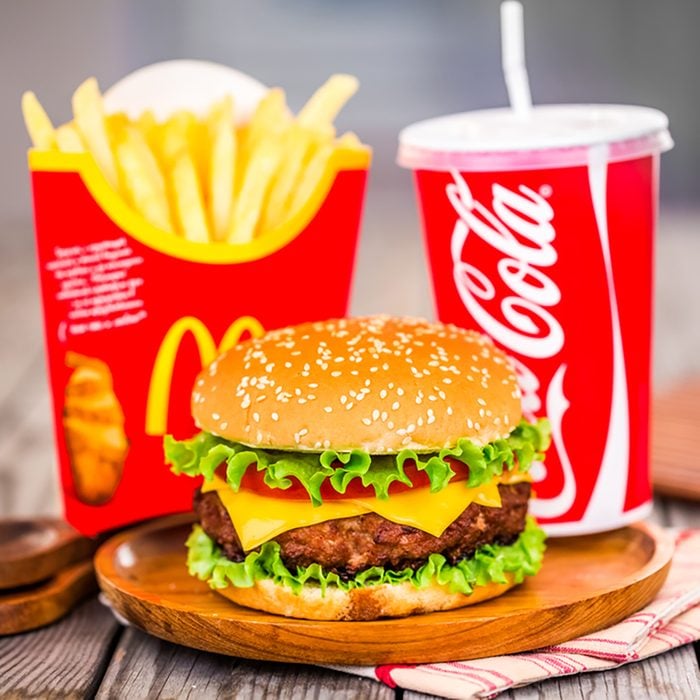
Myth: Mcdonald’s will Super Size your meal
After the infamous 2004 documentary, Super Size Me!, the fast-food chain eliminated this option from its menus, citing health concerns. And that was a good decision; no one needs a 42-ounce soda or 610-calorie carton of fries. But it’s still wise to check your portions. A large order of McDonald’s fries contains only 100 fewer calories than the phased-out Super Size version. Take Planell’s advice: If you’re going to order, order from the kid’s menu. Make sure you know the secret menu items you need to order at your favorite restaurants.
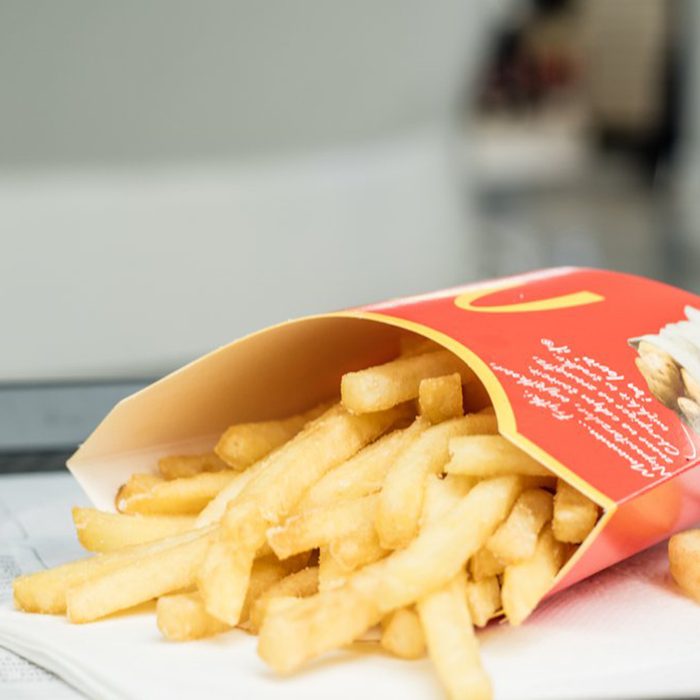
Myth: French fries are vegan
Yes, they’re made with potatoes, but hang on. “If you’re a vegan, you definitely want to read the ingredient list at any fast food restaurant,” says Karen Ansel, MS, RDN, author of Healing Superfoods for Anti-Aging: Stay Younger, Live Longer. “Things like French fries can sneak in animal products like hydrolyzed milk.”
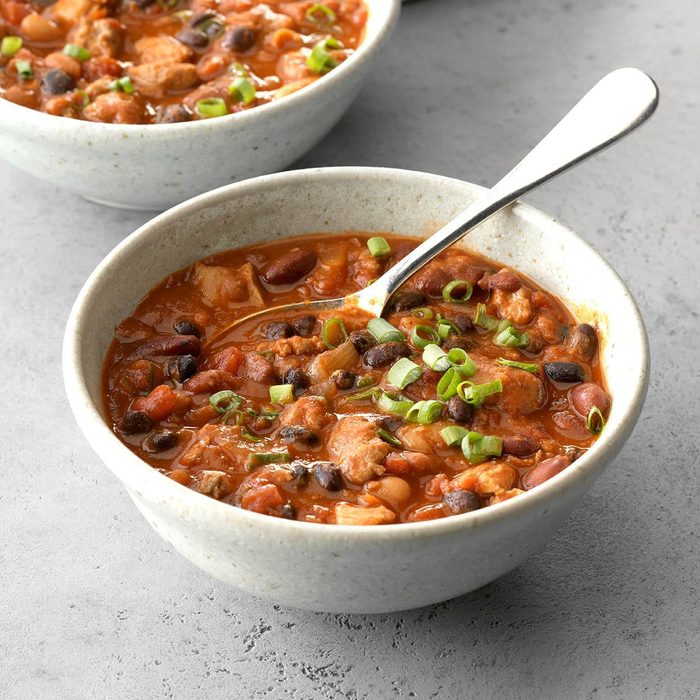
Myth: Wendy’s Chili has human fingers in it
Okay, this is a weird one: A woman did find a finger in a bowl of Wendy’s Chili in 2006. But it turned out that she had put it there herself in hopes of collecting a huge payout from a lawsuit.
That’s not the only rumor about the chain’s chili. People have also alleged that it’s made from grill scrapings. The truth is much more benign: The company makes its burgers to order, and it uses leftover beef to make chili. That’s just smart business, and it cuts down on food waste. Bravo, Wendy’s. Don’t miss these 10 (real) fast-food scandals that rocked the industry.
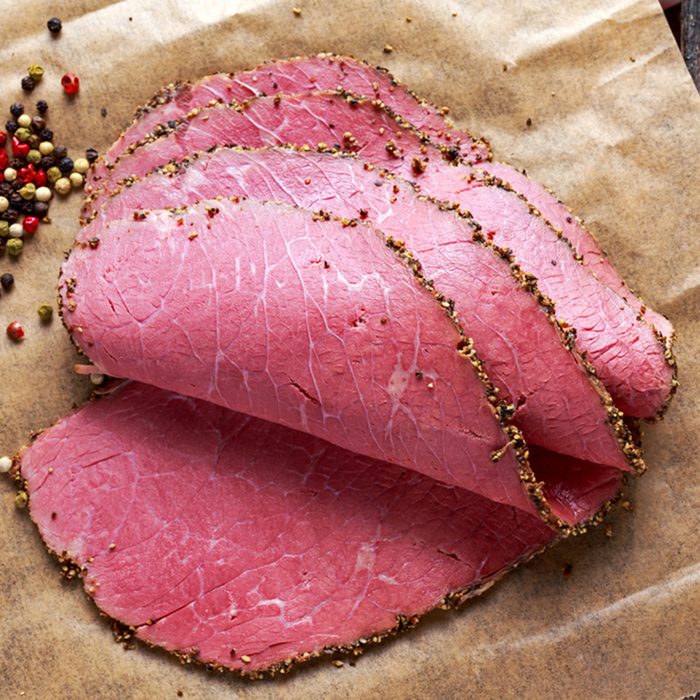
Myth: Arby’s uses “liquid meat”
There are people who swear the “We have the meats” chain doesn’t actually have actual meat. The claim is the beef is a reconstituted liquid, gel, powder or paste. While it’s true their roast beef sandwiches are weirdly uniform, the company has posted plenty of videos of their roasts being sliced.
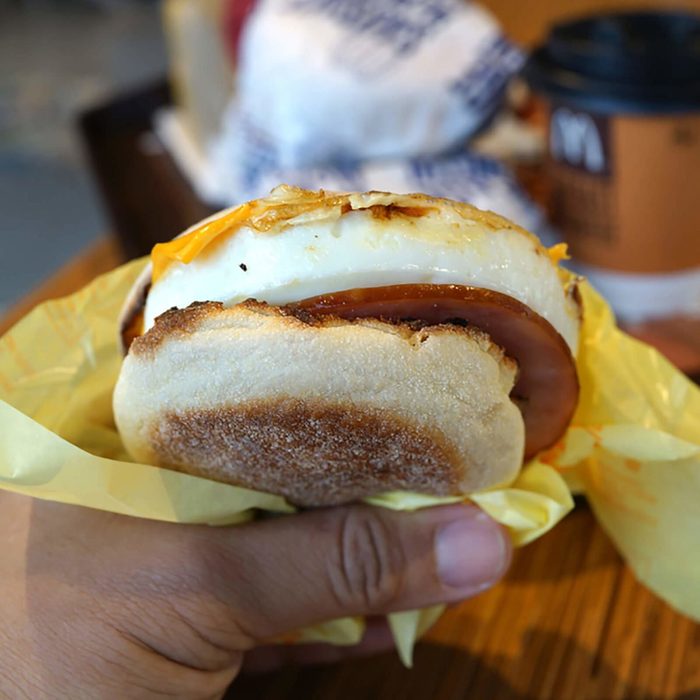
Myth: The Egg McMuffin doesn’t have eggs
If you’re worried the eggs you get at the drive-thru aren’t, ahem, all they’re cracked up to be, you can put your mind at ease. The classic Egg McMuffin is still 100 percent egg, no additives.
For the most part, fresh, whole foods are preferable for a healthy diet, says Planells. But just because a product contains an unpronounceable ingredient doesn’t always make it bad. “Some bloggers make a living off controversial claims about fast food and encourage these kinds of stories,” he says. Often, they make the food out to be worse than it really is. Don’t miss how the most popular fast food restaurants got their names.
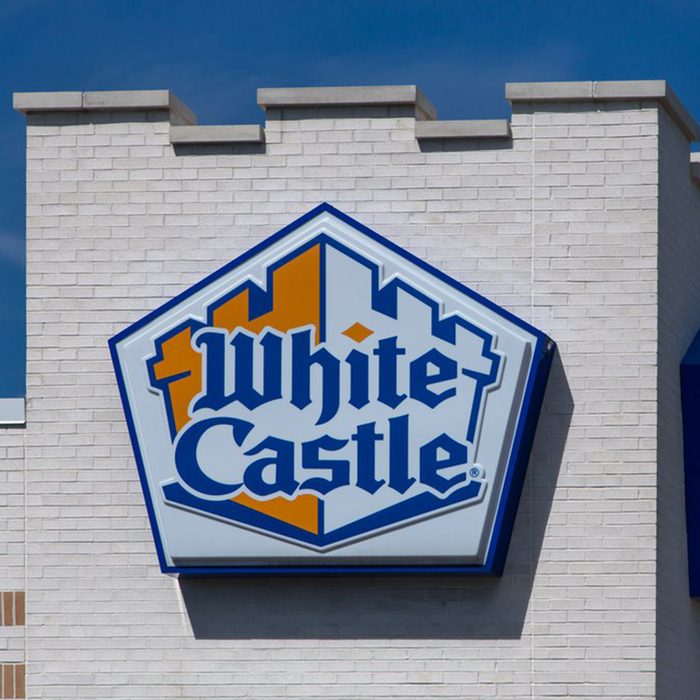
Myth: White Castle fakes its onions
Let’s just file this one under “Why?” Onions are pretty cheap, after all. Nonetheless, rumors persisted that the chain’s signature onions were cabbage slices soaked in onion juice. Honestly, all you need is one bite to know that this is a silly claim.
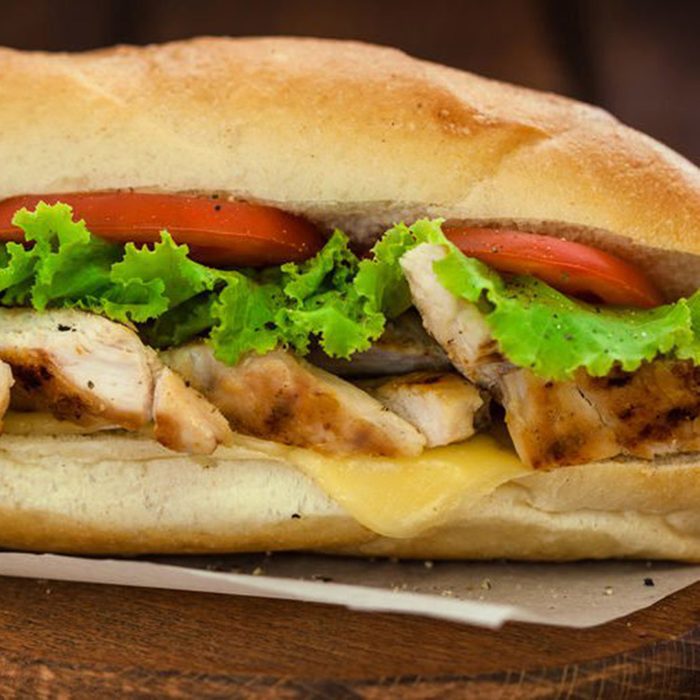
Myth: Subway’s chicken is about half soy
A Canadian broadcasting company sent chicken sandwiches from five major fast food chains out for DNA testing. The results showed that Subway’s chicken was much lower in chicken DNA than other chains. Subway vehemently denied the assertion and had their own testing done. The results? Mostly chicken—at least as much as any of the major chains. The other traces of DNA come from seasonings. Check out how to make your next visit to the drive-thru a little healthier.

Don’t fall for silly stories
There’s probably no end to the urban legends about fast food. At the end of the day, says Taub-Dix, “You have to remember, these restaurants want you to eat their food—they don’t want it to hurt you.” All the chains are subject to health and safety inspections, and a lot of their food is pre-packaged, making it even more unlikely that it has been tampered with or have mystery ingredients. Next, find out which fast food place has the best burger around.